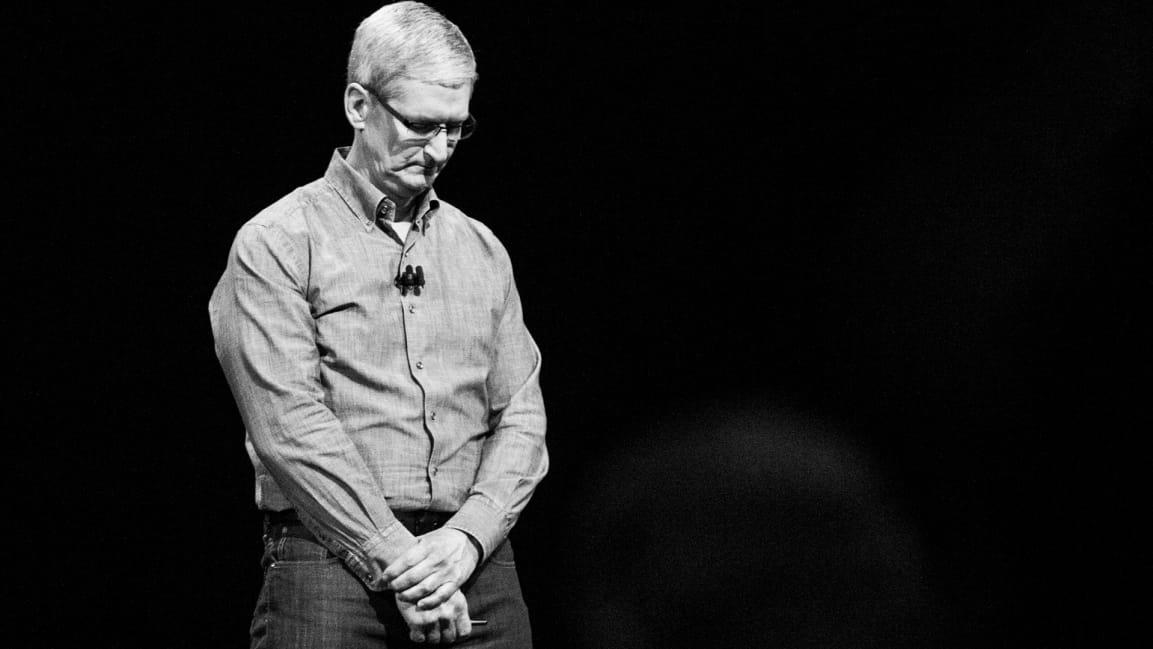A timeline of Apple’s six-month fall
Early this morning, Apple’s stock took its biggest one-day drop in five years after being the world’s first trillion-dollar company last August. But stock value is the least of Apple’s problems. What the hell happened in the last six months?
Let’s review:
- August 2, 2018. Apple’s valuation hits $1 trillion after years of ever-increasing record revenues and profit, which began when Steve Jobs returned to the company to save it from oblivion.
- September 12, 2018. Apple introduces the new iPhone XS, XS Max, and XR, phones that are priced higher than their predecessors and offer irrelevant new features over the previous generation, which was already the epitome of fluff over function.
- November 2, 2018. Huawei solidifies its No. 2 spot in global smartphone market share, leaving Apple behind once again for the third quarter of 2018.
- November 2, 2018. Apple announces that it will stop reporting iPhone unit sales after years of bragging about record sales. Investors get nervous and think sales are on the decline.
- November 15, 2018. Apple’s facial recognition sensor supplier AMS cuts sales forecasts, citing “recent demand changes from a major customer.”
- November 19, 2018. The Wall Street Journal confirms iPhone production cuts following lower-than-expected demand.
- November 23, 2018. Apple cuts iPhone XR prices in Japan amid reported poor sales in the country. The Wall Street Journal report says that Apple will resume production of the iPhone X to meet contractual obligations to its OLED screen provider, Samsung.
- November 26, 2018. Microsoft surpasses Apple’s valuation for the first time in eight years.
- December 4, 2018. Apple reportedly gets into panic mode, slashing prices through promotional deals and trade-in offers worldwide.
- December 9, 2018. iPhone XR LCD panel supplier Japan Display cuts production citing Apple sales slump.
- January 2, 2019. Tim Cook announces a revised guidance for Apple’s fiscal first quarter 2019: $84 billion revenue versus its previous $93 billion forecast, confirming worse-than-expected iPhone sales. That’s $6 billion and change less than first quarter 2018. Cook cited a lot of reasons, like iPhone sales, a strong U.S. dollar, too many new products, and bad economy in emerging markets. He also said that Apple’s $29 battery upgrade program–which the company introduced to avoid a scandal for its rogue speed throttling of old phones–hurt the upgrade cycle, further confirming that Apple depends on people feeling their current phones are too slow in order for them to upgrade. It also confirms that its new phones do not offer any compelling feature for most consumers.
EXCLUSIVE: After cutting Q1 expectations, Apple CEO Tim Cook tells CNBC that the shortfall is primarily in Greater China as trade tensions put pressure on the Chinese economy https://t.co/iOf79ebo17 pic.twitter.com/Lm7Wyp1VOX
— CNBC Now (@CNBCnow) January 2, 2019
- January 2, 2019. Netflix pulls out of iTunes’s subscription billing system, making new and lapsed users pay through its own website. The move, which the company tested in the summer, will not only curb a big chunk of Apple’s iTunes revenue–an estimated $256 million last month–but sends a clear message to other media companies and software developers: You don’t need Apple for subscriptions. And this comes exactly as Apple is trying to make third parties hike prices and use iTunes’s subscription system, a move that it hopes will make it less dependent on its suffering iPhone sales.
Is this the beginning of the end for Apple? Hardly. The company still has an extremely strong brand and user base. But that may change quickly, as the company’s history shows. This is more like a wake up call–things are not looking shiny at the moment and the company needs to correct course and fix a lot of things in the new year.
Fast Company , Read Full Story
(15)



